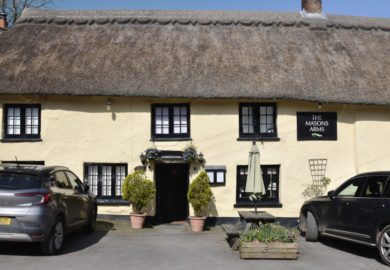An interview with the director of a honey museum on Tenerife many years ago changed how we thought about honey. Before the interview, we hadn’t thought about it at all really. Since, we’ve never been without a couple of jars of the stuff; one set, one runny. Following advice from that museum director, none of it is purchased from supermarkets … apart from a cheap bottle of squeezy honey I keep on the go to sweeten tea. We didn’t buy honey from supermarkets when we lived in Tenerife, nor in Portugal when we lived there, and the Somerset honey we’re currently using is from a producer less than three miles away. Going local when it comes to honey is a must for us.
It might come as a surprise to many who view the island as merely a sun and sand holiday destination, but we were spoiled by the honey on Tenerife. There were at least fourteen different varieties, ranging from avocado and agave to fennel and broom. Our favourite was chestnut, whose smoky earthiness was initially a bit of an acquired taste, but which quickly proved addictive. In Portugal, we similarly sought out different varieties from local producers. On moving to Devon and then Somerset, we applied the same approach.
Finding Somerset Honey
Finding good honey proved remarkably easy. The sheep farm where we rented a house on the Devon/Somerset border produced their own. When we needed honey, a jar was passed through the window. Being in such close proximity to hives was educational and fascinating. Watching how a swarm was tempted back into an abandoned hive after going on fly-about, and also how bees created their own air-conditioning when it was hot, were reminders just how smart nature is.
But honey supplies at the farm were limited, and we consume a lot of honey. As well as being tasty, it is a superfood, and a natural medicine. I learnt the benefits of a ‘hot toddy’ as a child (there’s a similar concoction in the Canary Islands) but I didn’t know it had antiseptic properties and can be used as a dressing for burns and cuts. Mostly, we use it in dressings for food, and spread it on toast.
When honey in the farm was in short supply, we’d pick a jar up at markets, delis, fairs, farm shops … anywhere but supermarkets. There are any number of outlets to buy honey from a small-scale producer in Somerset. However, going local means that honey isn’t always available. We had to widen our search when a usual supplier’s hives were destroyed. That’s the nature of buying truly local goods rather than mass produced ones. The Somerset Beekeepers’ website has a handy search facility for finding where to buy honey from producers registered with the association. There are twenty within a six-mile radius of us, so we’re not going to struggle to stay ‘local.’ Prices vary, with farm shops and delis often proving most expensive. A 240g jar can range from just over £5 to around £8.
Varieties of Somerset honey
As I mentioned previously, we were spoiled for choice on Tenerife, but it’s relatively easy to control which plants bees frequent on an island where certain varieties of plants are found in specific areas, and at varying altitude levels. It’s not so simple in the UK. As bees can cover up to six miles, they can gather nectar from a lot of different flowers on their travels. As a result, most honeys are multi-floral, flavoured by wildflowers in Somerset’s meadows and hedgerows, rather than monofloral. But there are single plant honeys to be found. The most common is heather honey which has a dark, distinctive flavour. I’ve also heard of borage honey, flavoured by starflower, but I’ve yet to try it. There are also honeys with additional ingredients – cider apples, walnuts etc. – but those don’t count. Then there are honeys from by different types of bees, such as black bees which are, incidentally, what the indigenous bees of Tenerife are.
And that, like so many things in nature, brings us full circle to complete the cycle.





1 Comment
Nay
Thank you for sharing ! I found this page while looking for real, local, Somerset honey that passed the DNA test like Apidae Honey.